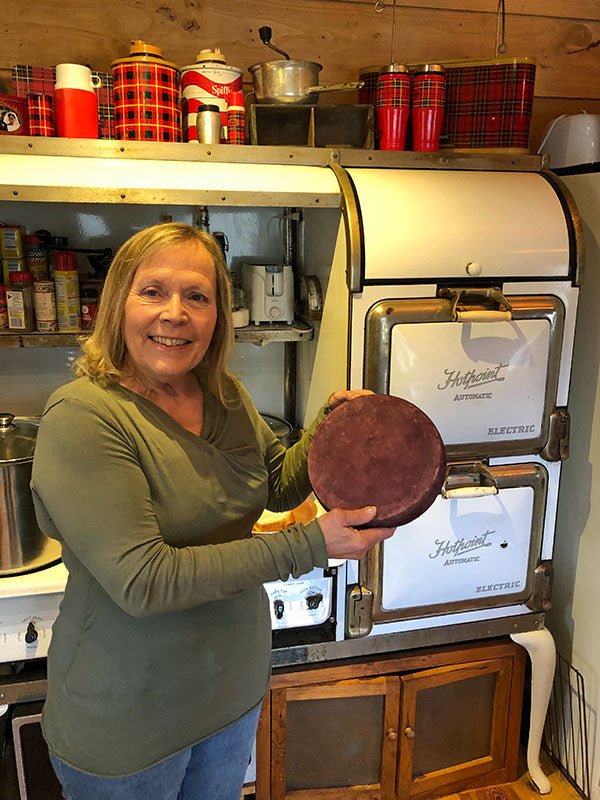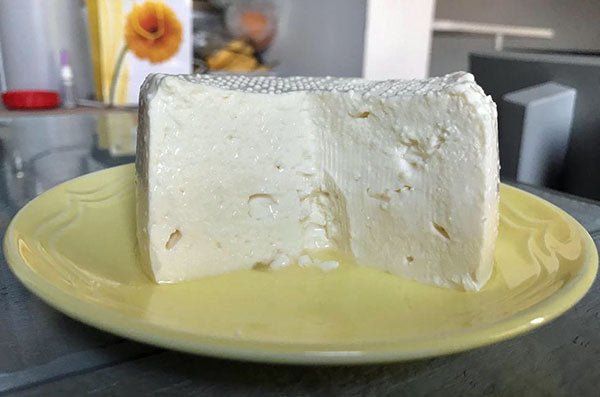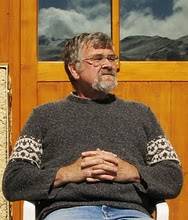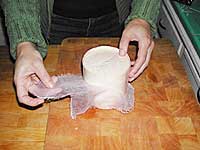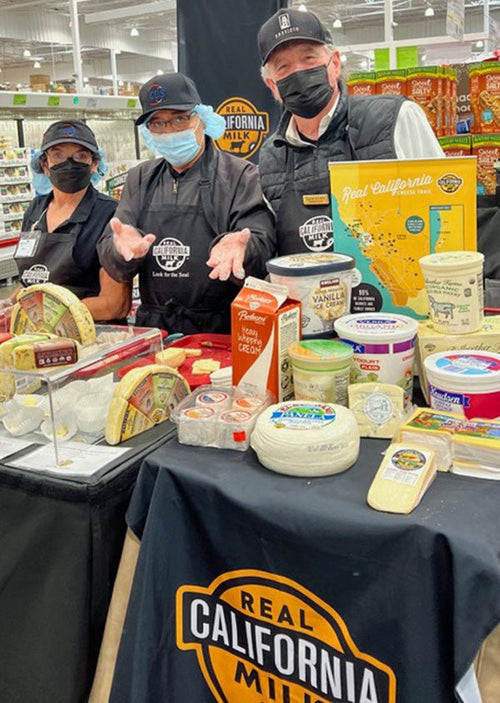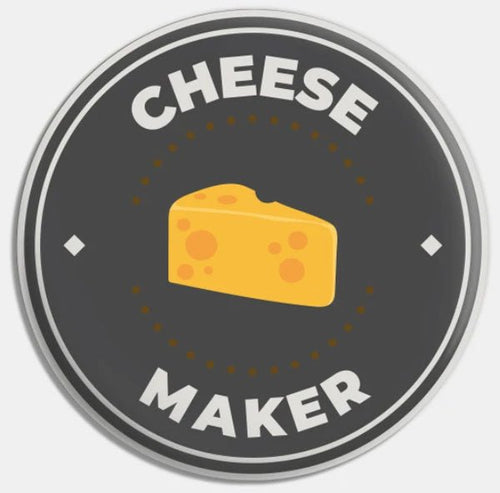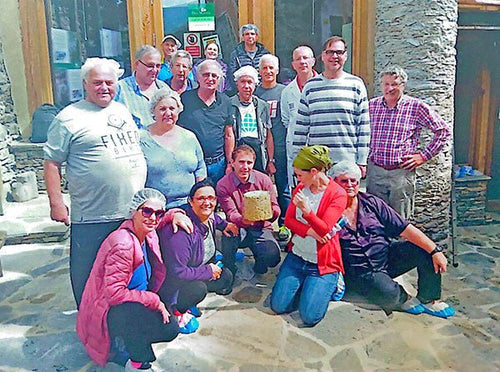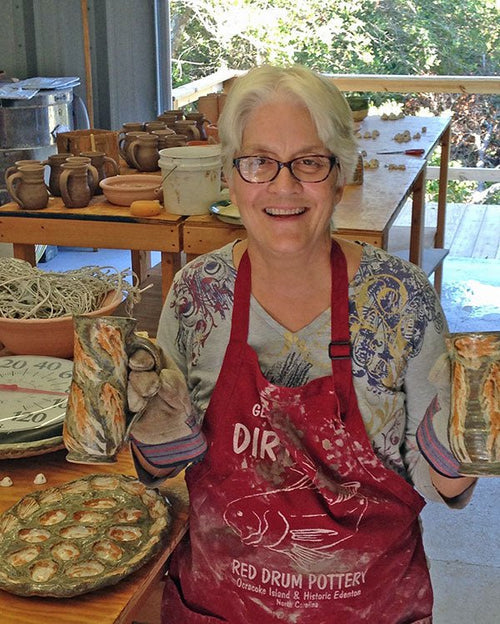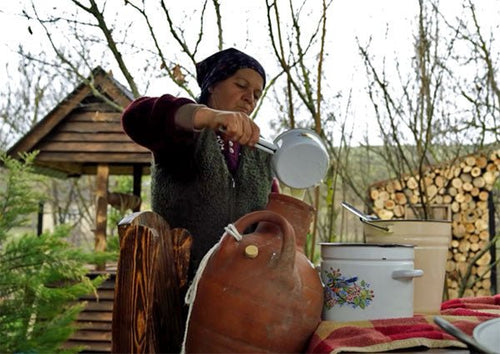
We first interviewed Tony in 2017 – click here
At that time, he was working full time as a pilot for Air New Zealand. Now, with the country in lock down, the airlines are only operating at 5% of their normal level of flying.
This has been a challenge for Tony because he and his family are adjusting to him being home much of the time. But, it has been an opportunity for us since it gave him time to write this update:
Tony’s Update
As I reflect back on the last three years, the brewery I built has been incredibly versatile. Not only do I brew beer in 40 litre (10 1/2 gal) batches, I make cheese, and it’s also perfect to sous-vide meat.

Cheesemaking set up. The right hand tank is purely hot water, while the tanks on the low table is for cheesemaking. The left hand tank is used for brewing only. The box on the wall controls temperature throughout the system.
I have now created a 25 sq meter (82 sq ft) kitchen in the barn, and enclosed it so that I have a clean work environment. It’s not like a house kitchen as there’s no cooktop or oven, but it serves it’s purpose really well. My cave is a three door shop display fridge to which I have added a temperature and humidity controller to try and give me a decent cave like environment. The controller is the black box on top of the fridge, and there is a humidifier sitting in the right hand space.

Just recently I bought a commercial bench that allows me to drain cheese on the bench top and have the whey drain directly down a sink into a bucket.

Draining table
Our small 5 acre block cannot support more than a couple of cows, however we have co-operated with our neighbors so we now have around 14 acres to graze stock on, and during winter there is an additional 8 acres in another neighbor’s property that we can use.
Our neighbor, Ann-Marie Preston has also learned to make cheese in the brewery, so this co-op is working really well for us both. Ann-Marie makes a really impressive (gold medal) Gouda which is our go-to cheese if we just want to preserve milk. We currently have five dairy cows which include three Ayreshires, one Brown Swiss, and one Jersey.

Our cows are a bit of a mixture. There are three Ayrshires, one Jersey, and one Brown Swiss.
We also have a few beef cattle that are approximately 9 months old and three pigs which are fed a mixture of whey and vegetable scraps, plus any other suitable food we can find. At the moment, there has been a drought over summer, so the grass is in poor condition and as a result we are feeding out silage. Unfortunately, our milk production is quite low, so if we want to make a big block of cheese, we need to combine two days milk. We have two cows calving next month, so we are looking forward to some late Autumn grass growth along with an increase in milk supply.

The pots that are in the photo hold 70 litres (18 gal), with the cheese pot holding 50 litres (13 gal) of milk, which is more than enough for a very large Gouda. Most of our hard cheeses are in the 4 to 5 kg (9-11 lbs) range, however the limit for a brie or washed rind cheese is around 30 litres (1 gal) of milk at a time because we don’t have enough moulds.

Cheese press in action. There are two settings: With the pin in the current position, at the bottom end of the lever, the weight on the lever is multiplied by 9 and, in the forward position it’s multiplied by 5.
We have made many different flavours of Gouda: Plain, fenugreek, calabrian chilli, cumin, and caraway. Other cheeses we’ve made are Brie, Reblochon, Feta, Havarti, St Paulin, mozzarella, burrata, farmhouse, halloumi, Paneer, Ricotta, and cheddar.

Queso fresco with chilli
You might ask how do we eat all this cheese? There are three families to feed, and we also give some away to friends and family. A 1 kg (2 lb) chilli Gouda wrapped in a beeswax cloth makes for an excellent gift.

Gouda with Calabrian chilli. Gold medal winner.
The ability to accurately control temperature is the biggest bonus with this system: I can pasteurize and then cool to maintain any ripening temperature I want and then hold it there for an extended period. I also make yogurt, but not in the brewery. It’s made in 3 litre (1 gal) direct set batches, which seems to be enough before it gets a little too acidic.
If you were to look in my cave, you would see that the bulk of the cheese is Gouda of varying ages. The oldest goes back to June 2018, and the newest is only a few weeks old. You will notice that there are no moulds on any of them at all. I don’t use any wax, but do paint them with a food safe EVA coating. This works really well by allowing the cheese to breathe but not dry out at all.

The top six trays hold Reblochon. It’s pretty obvious which ones are the Gouda. There are two blocks of Havarti which are in the cheddar shape and a couple of farmstead cheeses. Packaged cheese is out of sight in the next bay.
The fridge temperature controller is set to 12C (54F), and the humidity is set to 90%. The problem with this set-up is that the humidity varies throughout the fridge. As as you can see, I have a number of dish draining trays in there to create a micro environment for the Reblochon and brie. It works pretty well, so it’s an economic way of getting a cheese that requires a high humidity to develop.
There’s a lot in there right now, with 18 x 600 gm (1.3 lb) Reblochons that are nearly ripe. The latest recipe for Reblochon by Jim Wallace on https://cheesemaking.com/products/reblochon-recipe-traditional has been very helpful. I was able to buy the cultures specified in his recipe from Australia, as none were available in NZ. I have been incredibly happy with the results. I’ve only just cut the first one after five weeks and it has ripened perfectly.

Reblochon curds
As well as eating Reblochon with crackers, they can also be used in cooking: Tartiflette comes to mind immediately. I’ve eaten a few plates of tartiflette over the years so I think this will be on the menu soon. See https://hopeeternalcookbook.wordpress.com/2010/09/24/tartiflette/ to find a good recipe for this calorie busting delight. Rather than grating cheese, we just cut up the Reblochon (into 1/4 and then vertically to create 8 triangles) and layer them on top of the potato mixture.

Reblochon almost ready to eat. I note that the Geotrichum hasn’t really developed as the B. linens culture overpowers it.
Not long after the last blog was published, I entered one of the brick cheeses into a cheese competition and achieved a gold medal. I was really happy with this as it helps bench mark how my cheese making is progressing. Ironically, I wasn’t able to duplicate that cheese again despite many attempts.
The following year, we entered a Calabrian Chilli Gouda, which Ann-Marie made, and won a gold medal, and this year my Reblochon also won gold. Fortunately, we’ve been able to duplicate both of these, so now we have a plentiful supply of both Gouda and Reblochon.
I’ve just cut one of the Reblochon from the latest batch. It’s only five weeks old and is exactly as I would expect. It’s firm on the outside, and when warmed to room temperature, the paste becomes beautiful and soft, and incredibly unctuous. I have to thank Jim Wallace for this: his latest recipe is the key to making this as good as it is. The only thing I cannot seem to get is the blush of white on the outside.
I’ve gathered a bit of equipment along the way, and I think a really cool piece is a cream separator from the 1950’s; just what every home cheesemaker needs. I found it on an auction site in NZ for a really good price. It hadn’t been used for 35 years, but anyway I sent it to a workshop to get the motor sorted out, cleaned up all the cones with nitric acid, cleaned and plated the spouts, and now I have a fully operational 1/3 HP Lister cream separator.

The cream separator in action. The motor is hidden behind the spouts. There are 44 disks in the separator stack.


I’m really happy with this as it’s the same style of machine my grandfather used when they used to send cream to the dairy. Getting this going has brought back heaps of memories from my grandfather’s farm during the 1950’s.
The farm was only 15 km (9 mi) out of town but there was no way to get milk to the dairy company. The cream was separated off, with the skim milk being fed to pigs, and the cream going to the butter factory. Fast forward 60 years I am now making butter, which is either a sweet butter or sometimes a cultured butter, depending on how much time I have, and the skim milk goes to the pigs.
The cream I get from this machine is amazing. I get 1 litre (1 qt) of cream from every 10 litres (2 1/2 gal) of milk, and when chilled, it is incredibly thick. Right now, with the cows drying off, we have no excess milk, so no cream is being produced, but we do have a lot of butter in the freezer. I’ve also converted some of the butter into ghee, which is a superb substitute for oil in cooking.

Butter
As mentioned above, I recently learned about the sous-vide method of cooking meat. I’ve done a couple of beef briskets, which cook for 48 hours at a very low temperature of 64C (147F), and then are finished off very quickly in a hot BBQ. It takes a while, but the result worth the wait. It’s quite a different style to Texas brisket, however the meat is very tender and slices easily. I have to say that I do like both styles. It’s been very pleasing to be able put the brewery to a lot of use over the last three years. When I built it, I had no idea that it would be used as extensively as it has been.
Finally, I would encourage any home cheese maker in NZ to join the NZ Specialist Cheesemakers Association. If you are keen on making a top quality cheese, then entering the cheese awards is an excellent way to benchmark what you are making. I think its awesome that a home cheese maker can have his/her cheese judged professionally in a blind tasting and get an honest appraisal of their craft. It’s not expensive, and if you wish to develop commercially its a great place to network and receive help. The NZSCA is an organisation that has most of New Zealand’s commercial cheese makers as members. In addition to promoting cheese, they also organize the annual NZ Cheese awards.
(Note: This year, Tony won “Curds & Whey Champion Homecrafted Cheese and Cheesemaker; Makauri Gold.” Congrats!)





























